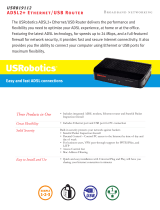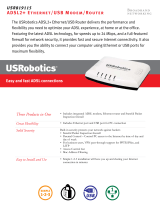
Data Sheet
© 2009 Cisco Systems, Inc. All rights reserved. This document is Cisco Public Information. Page 9 of 13
Feature Specification
LEDs PPP, VPN, ADSL, G.SHDSL, WLAN, LAN
External Power Supply Universal 100 to 240 VAC
Inline PoE Optional external adapter for inline PoE for IP phones or external wireless access points
DSL Specifications
●
ST-Microelectronics 20190 Chipset
●
Supports ADSL over basic telephone service with Annex A and Annex B ITU G. 992.1 (ADSL), G.992.3 (ADSL2),
and G.992.5 (ADSL2+)
●
Supports ADSL over basic telephone service with Annex M (except UK Mask) (extended upstream bandwidth)
G.992.3 (ADSL2) and G.992.5 (ADSL2+)
●
G.994.1 ITU G.hs
●
Support for Reach-extended ADSL2 (G.922.3) Annex L
●
Complies with T1.413 ANSI ADSL DMT issue 2
●
DSL Forum TR-067
●
The chipset does not provide interoperability with carrierless amplitude modulation/phase modulation (CAP)-based
ADSL lines
●
Annex A and Annex B are supported starting with Cisco IOS Software Release 12.4(4)T.
●
Annex M (except UK Mask) is supported starting with the special Cisco IOS Software Release 12.4(11)XJ; and
requires the CISCO877-M-K9 or CISCO877W-G-E-M-K9 SKU.
●
The ADSL2 standard (ITU G.992.3) adds new features and functions targeted at improving ADSL performance and
interoperability. In addition, the standard adds support for new applications, services, and deployment scenarios.
Among the changes are improvements in data rate and reach performance, rate adaptation, improved diagnostics,
and power enhancements. The conventional ADSL standard (ITU G.992.1) provides downstream data rates of up to
8 Mbps and upstream data rates of up to 0.8 Mbps, and ADSL2 provides higher downstream rates of up to 12 Mbps
and upstream data rates of up to 1 Mbps.
●
The ADSL2+ standard (ITU G.992.5) doubles the bandwidth used for downstream data transmission, effectively
doubling the maximum downstream data rates, and achieving downstream data rates of up to 24 Mbps and
upstream data rates of up to 1.5 Mbps.
●
Cisco 877-M supports ITU G.992.3 Annex M (except UK Mask), and is optimized for PSD Mask EU-64 M9. Annex M
adds capabilities for extended upstream bandwidth above 2.0Mbps. This allows carriers and enterprises to cover
applications traditionally served by T1, E1, G.SHDSL without overhauling the transport infrastructure. Exact data
rates vary depending on the distance from the DSL access multiplexer (DSLAM), DSLAM type, line card and
chipset, and firmware, noise profile, quality of copper, etc. The reach-extended ADSL2 standard (G.992.3)
●
Annex L increases performance on loop lengths greater than 16,000 feet from the Central Office.
Wireless Specifications
Data Rates Supported 1, 2, 5.5, 6, 9, 11, 12, 18, 24, 36, 48, and 54 Mbps
Receive Sensitivity 802.11b
●
-94dBm @ 1 Mbps
●
-93dBm @ 2 Mbps
●
-92dBm @ 5.5 Mbps
●
-90dBm @ 11 Mbps
802.11g
●
-92dBm @ 6 Mbps
●
-90dBm @ 9 Mbps
●
-89dBm @ 12 Mbps
●
-87dBm @ 18 Mbps
●
-85dBm @ 24 Mbps
●
-81dBm @ 36 Mbps
●
-76dBm @ 48 Mbps
●
-73dBm @ 54 Mbps
Maximum Transmit Power Note: Maximum power setting subject to changes by channel & by region depending on regulations
●
802.11b Average: 80mW (19dBm), Peak: (FCC) 245mW (23.9dBm)
●
802.11g Average: 50mW (17dBm)
Immunity
●
IEC 61000-4-2:1995 Immunity to Electrostatic Discharges
●
IEC 61000-4-3:1995 Immunity to Radio Frequency Electromagnetic Fields
●
IEC 61000-4-4:1995 Immunity to Electrical Fast Transients
●
IEC 61000-4-5:1995vImmunity to Power Line Transients (Surges)
●
IEC 61000-4-6:1996 Immunity to Radio Frequency Induced Conducted Disturbances
●
IEC 6100-4-8: 1003 Immunity to Power-Frequency Magnetic Fields (N/A for most of Cisco equipment)
●
IEC 61000-4-11:1995 Immunity to Voltage Dips, Voltage Variations, and Short Voltage Interruptions














